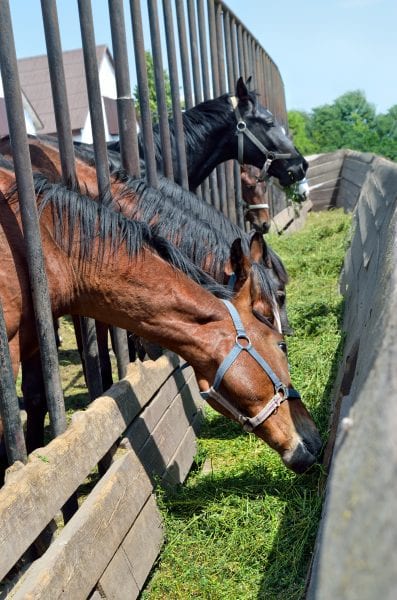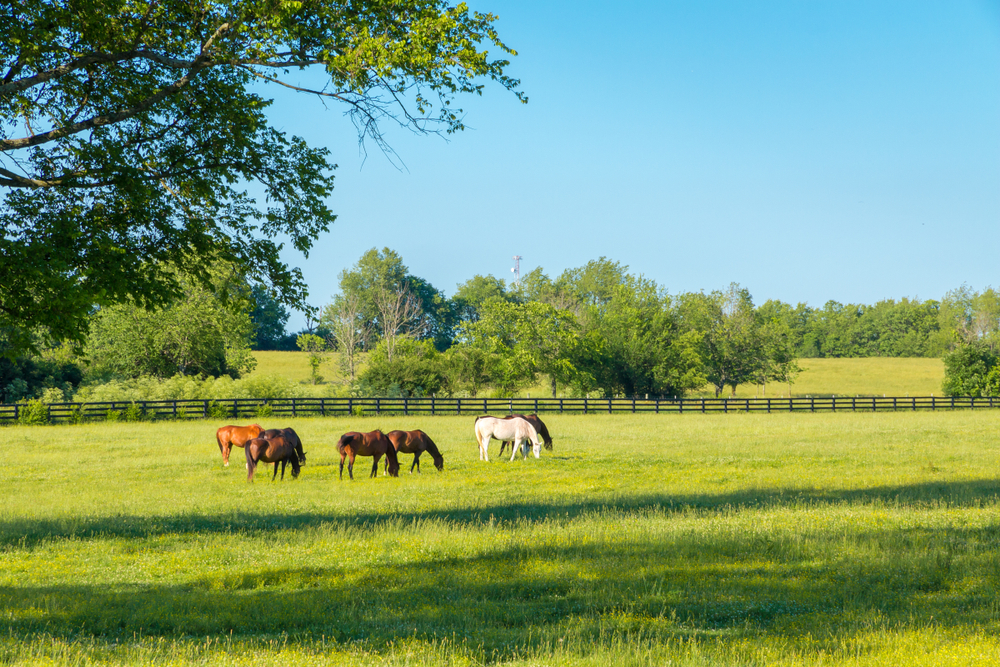Farming

When producing hay to be sold to horse owners, it is important to understand the difference between being a seller or a marketer.
The goal of hay sellers is to identify customers who like what they produce, sell the hay at a fair price, and move it as quickly as possible. The issue with this type of business plan is that it may lead to inconsistent sales. To develop a business that brings significant income from producing hay, producers must understand the needs and desires of their customers.
Build a Relationship
 First, producers should build a relationship with horse owners and provide as much information about their hay as possible. Horse owners are often not the target audience for agronomic education and are not typically familiar with the hay making process. Therefore, horse owners tend to rely heavily on the Internet, word of mouth, or their veterinarian for advice on hay. Hay producers must also understand that horses utilize forages differently than ruminant livestock. Negative factors, such as mold, will cause more harm in the horse than it would cause in ruminants. Horse owners, therefore, tend to have different standards than beef cattle or goat owners have. Because hay doesn’t come with a feed tag with a guaranteed analysis, it is important to have a forage analysis available for the horse owners to use as a reference. If a forage analysis is not available, horse owners will often measure nutritive value by face value or the appearance of the hay.
First, producers should build a relationship with horse owners and provide as much information about their hay as possible. Horse owners are often not the target audience for agronomic education and are not typically familiar with the hay making process. Therefore, horse owners tend to rely heavily on the Internet, word of mouth, or their veterinarian for advice on hay. Hay producers must also understand that horses utilize forages differently than ruminant livestock. Negative factors, such as mold, will cause more harm in the horse than it would cause in ruminants. Horse owners, therefore, tend to have different standards than beef cattle or goat owners have. Because hay doesn’t come with a feed tag with a guaranteed analysis, it is important to have a forage analysis available for the horse owners to use as a reference. If a forage analysis is not available, horse owners will often measure nutritive value by face value or the appearance of the hay.
Alfalfa-bermudagrass hay could potentially provide a greater profit margin than warm-season perennial grass hay alone. Alfalfa is often highly sought after in horse barns across the southeast due to its high nutritive value and the positive effects it has on horses with gastric ulcers. The challenge with obtaining alfalfa hay in most parts of the southeast is the high cost of shipping it in from other parts of the country where it is grown. In the last several years, however, bermudagrass interseeded with alfalfa has been successfully grown in the central and northern parts of Georgia and Alabama. The University of Georgia found that interseeding alfalfa into bermudagrass may boost crude protein by more than 50 percent and contain more than 62 percent TDN (total digestible nutrients). This creates a potential market for hay producers in the southeastern region, but to be successful, a thorough understanding of the characteristics of alfalfa/bermudagrass hay as it relates to a horse’s nutrient requirements (table 1) is important.
Table 1. Minimum Nutrient Concentration in Total Horse and Pony Diets (Dry Matter Basis)
Adapted from the National Research Council’s Nutrient Requirements of Horses (1989)
| Animal | Mcal/lb | CP | Lysine | Ca | P | Mg | K |
|---|---|---|---|---|---|---|---|
| MATURE HORSES | |||||||
| Maintenance | 0.90 | 8.0 | 0.28 | 0.24 | 0.17 | 0.09 | 0.30 |
| Stallions | 1.10 | 10.0 | 0.34 | 0.29 | 0.21 | 0.11 | 0.36 |
| PREGNANT MARES | |||||||
| 9 months | 1.00 | 10.0 | 0.35 | 0.43 | 0.32 | 0.10 | 0.35 |
| 10 months | 1.00 | 10.0 | 0.35 | 0.43 | 0.32 | 0.10 | 0.36 |
| 11 months | 1.10 | 11.0 | 0.37 | 0.45 | 0.34 | 0.11 | 0.38 |
| LACTATING MARES | |||||||
| Foaling to 3 months | 1.37 | 13.0 | 0.46 | 0.52 | 0.34 | 0.10 | 0.42 |
| 3 months to weaning | 1.31 | 11.0 | 0.37 | 0.33 | 0.22 | 0.09 | 0.33 |
| WORKING HORSES | |||||||
| Light Work | 1.26 | 10 | 0.35 | 0.30 | 0.22 | 0.11 | 0.37 |
| Moderate Work | 1.32 | 10 | 0.37 | 0.31 | 0.23 | 0.12 | 0.39 |
| Intense Work | 1.43 | 11 | 0.40 | 0.35 | 0.25 | 0.13 | 0.43 |
| GROWING HORSES | |||||||
| 4 to 5 months | 1.40 | 14.5 | 0.60 | 0.60 | 0.38 | 0.08 | 0.30 |
| 6 to 11 months | 1.40 | 14.5 | 0.61 | 0.56 | 0.31 | 0.08 | 0.30 |
| YEARLING | |||||||
| 12 to 17 months | 1.30 | 12.6 | 0.53 | 0.43 | 0.24 | 0.08 | 0.30 |
| TWO-YEAR-OLD | |||||||
| Not in training | 1.15 | 10.4 | 0.42 | 0.31 | 0.17 | 0.09 | 0.30 |
| In training | 1.20 | 11.3 | 0.45 | 0.34 | 0.20 | 0.10 | 0.32 |
Alfalfa is ideal for horses requiring a higher plane of nutrition, such as lactating broodmares, growing horses, thin horses, racehorses, performance horses, or young foals that aren’t getting enough milk. For horses with metabolic syndrome, the recommendation is to feed hay that is below 12 percent nonstructural carbohydrates (NSC). Alfalfa tends to be lower in NSC than some grass hay types, but can also be mixed with forages lower in carbohydrates to achieve a lower NSC value. A good example of a lower NSC forage would be bermudagrass or bahia.
Many horse owners purchase alfalfa and grass hay separately. Mixing alfalfa and grass hay allows owners to create a diet balanced for each horse. For instance, if you have two horses, one with a lower activity level but in good condition and the other considered a performance horse with a high activity level, the alfalfa and grass hay can be mixed to meet their specific needs. After acquiring a basic knowledge of the nutrient requirements of horses and how alfalfa may fit in their diet, horse owners commonly have some concerns. The following are typical questions horse owners ask alfalfa hay producers:
- Which cutting is the hay?
- Is the hay blister beetle free?
- Where was the hay grown?
- Is it sun bleached?
- Do the leaves fall off easily when handling the hay?
- Is there any mold present in the hay?
- Was the hay barn stored?
- Is there a forage analysis available for the hay being sold?
When selling hay to horse owners, be prepared to answer these questions and provide education to them on the relative nutritional value of your product.
Leanne Dillard, Extension Specialist, Assistant Professor, Animal Sciences and Forages, Auburn University
Reviewed July 2022, Marketing Alfalfa-Bermudagrass to Horse Owners, ANR-2580

